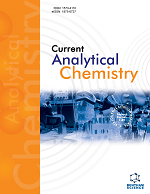
Full text loading...
We use cookies to track usage and preferences.I Understand

4-n-butylresorcinol (4nBR) was widely used in the treatment of chloasma and skin whitening cosmetics. As a decolorizing agent, it can effectively control the activity of tyrosinase. Market regulatory authorities require truthful labeling of ingredients in cosmetics. Therefore, the quantitative determination of 4nBR is of great practical significance.
At present, the main detection method of 4nBR reported in the literature is HPLC.Compared with the HPLC method, optical methods offer several advantages, including low cost, and simplicity, which make them suitable for on-field detection applications. A convenient spectrophotometric method was established for 4nBR detection.
Fe3+ can oxidize the common colorless chromogenic substrate 3,3',5,5'-tetramethylbenzidine (TMB) to blue oxTMB. Based on the fact that 4-n-butyl resorcinol (4nBR) can reduce oxTMB, a convenient and rapid spectrophotometric method for the determination of 4nBR was proposed.
Under the optimum conditions, the absorbance at 652 nm has a good linear relationship with the concentration of 4nBR in the range of 1.2 - 16 μM. The linear equation for the detection of 4nBR was ΔA = 0.0546 c (μM) - 0.0026 (r2=0.9962), and the detection limit was 0.33 μM. The accuracy of this method is comparable to that of HPLC.
This method has good selectivity for 4nBR and good anti-interference ability for common additives in cosmetics. The proposed method can be applied to the determination of 4nBR in thereal samples.

Article metrics loading...

Full text loading...
References


Data & Media loading...